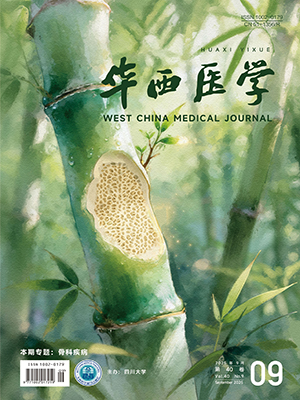Objective To evaluate the effectiveness of the shared decision-making scheme in postoperative out-of-hospital extended care for patients with total hip/knee arthroplasty (THA/TKA). Methods Patients who underwent THA/TKA in the Department of Orthopedic Surgery at West China Hospital of Sichuan University between October 2023 and April 2024 were included using convenience sampling. Patients were divided into the control group (odd-numbered dates) and the intervention group (even-numbered dates) based on the surgical dates. The intervention group was received care guided by a shared decision-making protocol, whereas the control group was followed the standard post-arthroplasty follow-up procedures. Differences between the two groups were compared in terms of decision-making capacity, decision satisfaction, and hip/knee function at the following time points: on the day of discharge, 3 weeks after discharge, 2 months after discharge, and 3 months after discharge. Results A total of 118 patients were included, with 59 cases in each group. There were no significant differences in demographic and clinical characteristics between the two groups (P>0.05). In terms of decision-making, compared with the control group, the experimental group had stronger decision-making ability, lower decision-making conflict, and more satisfaction with the decision-making process (P<0.05). In terms of joint function, the experimental group showed better joint function than the control group at 3 weeks, 2 months, and 3 months after surgery (P<0.05). There was no significant difference in the pain dimension of the Western Ontario and McMaster Universities Osteoarthritis index between the two groups (P=0.199). Conclusions Compared with the traditional follow-up protocol, the shared decision-making protocol can enhance patient engagement in medical decision-making, reduce decisional conflict, improve satisfaction with the decision-making process, and simultaneously promote joint functional recovery and expedite the rehabilitation process.
Citation:
HUANG Cun, NING Ning, CHEN Jiali, LI Peifang, ZHANG Lin, WANG Liqun, QU Junhong, PU Xingcui, ZHOU Zongke. Application of shared decision-making in the extended care of artificial joint replacement. West China Medical Journal, 2025, 40(9): 1417-1423. doi: 10.7507/1002-0179.202507119
Copy
Copyright © the editorial department of West China Medical Journal of West China Medical Publisher. All rights reserved
| 1. |
|
| 2. |
|
| 3. |
|
| 4. |
|
| 5. |
张扬. 骨科出院患者医院社区一体化延续护理模式构建与应用研究. 南京: 东南大学, 2017.
|
| 6. |
|
| 7. |
|
| 8. |
|
| 9. |
|
| 10. |
|
| 11. |
|
| 12. |
|
| 13. |
|
| 14. |
|
| 15. |
|
| 16. |
|
| 17. |
|
| 18. |
|
| 19. |
|
| 20. |
|
| 21. |
|
| 22. |
|
| 23. |
|
| 24. |
|
| 25. |
|
| 26. |
|
| 27. |
|
| 28. |
|
| 29. |
|
| 30. |
|
| 31. |
|
| 32. |
|
| 33. |
|
| 34. |
|
| 35. |
|
| 36. |
|
- 1.
- 2.
- 3.
- 4.
- 5. 张扬. 骨科出院患者医院社区一体化延续护理模式构建与应用研究. 南京: 东南大学, 2017.
- 6.
- 7.
- 8.
- 9.
- 10.
- 11.
- 12.
- 13.
- 14.
- 15.
- 16.
- 17.
- 18.
- 19.
- 20.
- 21.
- 22.
- 23.
- 24.
- 25.
- 26.
- 27.
- 28.
- 29.
- 30.
- 31.
- 32.
- 33.
- 34.
- 35.
- 36.




